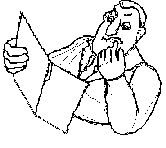

| Book of the Month | ||
 |
The Economist Style Guide |  |
Publisher: Profile books
Price £16.99
143 pages
ISBN: 186197535X
Many readers of these pages will have seen The Economist. This weekly newspaper that looks like a magazine has its name in white on a red background. It is more than 100 years old and is sold in almost every country on earth. The Style Guide is a book that is given to every journalist who works for the newspaper, and it lays down the style of writing for the whole newspaper.
The first thing you will notice about the Guide is how it emphasizes that good style in English is linked to clarity in writing. In many languages (Latin literature is a good example) a writer is admired for the complexity and clevernessof his sentences. If a writer is able to introduce rare words, or use exotic grammar skillfully and correctly, he is applauded. Not in English. The most important thing about English style is that it should clearly and precisely carry an idea from the writer's mind to the mind of his reader. If this is achieved with as few words as possible, then the writer is said to have an excellent writing style.
So The Economist urges its writers to aviod euphemisms (someone 'with a severe hearing impediment' should be called 'deaf'). Long sentences should be avoided. "Simple sentences help." says the Guide, showing no fear of three word sentences. One editor says that good writers "will notice that their copy ('copy' means material written for a newspaper) ... is likely to be used. It may even be read." If you want to look at some of the details in the book for yourself go to The Economist web page; where you can also try a style quiz.
The book is arranged alphabetically, with entries like 'Spelling', 'Titles' (of books and aristocrats among others) and metaphors. Along the way there are helpful comments to avoid the sort of mistakes that even English speakers often make - for example 'any one' refers to a number; 'anyone' refers to a person. If you are not sure whether a political party's name should have capitals, check the style guide. (It should.) If you need a list of proof-reading symbols (these are international symbols that you write in the margin telling a writer how to correct his text), the Guide has them. And a list of US and English spellings, and of (inter alios) the meaning of various Latin expressions that are often used in English.
Who is this book for? Anyone who needs to write top-quality English. If you are preparing a uinversity thesis, or writing a business report, then this book will help you to produce a professional document. Sometimes you are judged on the quality of your English. If you follow all the rules in this book then your English will be as good as it can be.
Verdict: Essential for serious English writing. Not needed for letters to your friends.
Assessment 10/10 (the web site adds that last point!)